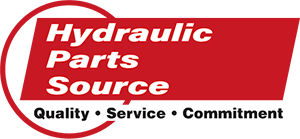7 Outside Sales Strategies to Drive Fluid Power Revenue
Modern companies often ignore face-to-face selling in favor of its younger brother: Inside sales.
That’s understandable since inside sales teams can be from 40% to 90% less expensive than an outside sales team.
However, cheaper doesn’t always mean better. If you’re a B2B company, or any business selling a complex solution, nothing beats the personal touch of outside sales. This is especially true in the fluid power industry.
Key Differences of Inside & Outside Sales
Think about it. How many sales emails do you ignore daily?Do you answer, or give your full attention, to every call you take? Probably not.
Unlike Outside Sales Reps who work hard to get agreed-upon “face time” with customers, inside sales reps can be ignored.
Outside sales teams generate face-to-face interactions which leads to stronger relationships with the customer. In fact, 95% of people agree face-to-face meetings are essential for long-term business relationships.
A big difference is in the money. Outside sales teams have a 30.2% higher close rate, and their sales revenue averages about 130% more than inside sales teams.
In contrast, Inside Sales Reps cost less to retain, earning 15% less than Outside Sales. They tend to generate less revenue per order than Outside Sales, but research shows they have shorter sales cycles.
Given the above data, if your Inside Sales team is outpacing your Outside Sales team, there’s a good chance that Outside Sales isn’t performing as well as they could be.
Strategies to Optimize Your Outside Sales Team
Your outside sales team can be your biggest expense or greatest revenue source. To optimize their performance, use these 7 strategies.Strategy #1: Use Your Best Salespeople to Identify the Best New Hires
Hiring the right reps is crucial. Employee turnover is one of the biggest expenses in business, especially when those employees are sales reps. It can cost up to 200% of an employee’s annual salary to replace them.Hire right the first time by surveying your best sales reps and using them as the “measuring stick” for job candidates. Ask about their habits, behaviors, and qualities they use in the field and use them as standards in your hiring process.
Strategy #2: Train Your Reps
It’s common for hydraulic & pneumatic salespeople to be trained on technical topics if they don’t already have that knowledge.Sales training, however, is often overlooked when considering how to cut costs. It looks like an expense, but it’s actually an investment.
Sales training improves performance and creates more business down the line. Setting up an internal sales training program is a cost-effective way of teaching sales skills and product knowledge.
Proper sales training cuts costs pre-emptively. For a deeper drive into effective sales training, check out Badger's Ultimate Sales Training Guide.
Strategy #3: Promote Transparency
Transparency is motivating.If the rest of your team can see how many meetings your star sales reps are setting, they'll try harder. Create friendly ways to foster competition during your weekly meetings, such as investing in a “scoreboard” for the office where you can watch the numbers shoot up.
In addition, make it part of your sales culture openly discuss what’s working for your star sales reps so everyone can benefit from their experience. Work on informal, relaxed ways to encourage this communication such as team building events.Strategy #4: Track Your Team’s Analytics
In sports, a good coach monitors players’ weak spots so they can find ways to help them get stronger. In sales, a leader should do the same.A solid CRM can help with this. It allows you to get deep into your team’s performance and gain serious insight on their strengths and weaknesses.
Track their meetings, routes, closed deals, and missed opportunities to get an accurate view of their untapped potential, and then create action plans to support them where they need it most.
Strategy #5: Incentivize Success
In B2B companies, the incentive structure is the biggest influence on its sales team’s performance. This rings just as true when it comes to Outside Sales in fluid power and manufacturing distribution.An outside sales team’s compensation plan is the biggest expense for most companies, so it has to be managed carefully. The right incentives, however, promote a strong sales funnel and make everyone's job easier.
Research shows that a multi-tiered incentive structure is the best solution for motivating performers across skill levels. Multi-tiered incentives allow “core performers” (reps who make consistent but low value sales) to aim for achievable targets, improving performance among a wider range of employees versus solely the reps in the “top performer” category.
Strategy #6: Communicate Regularly
How you communicate says a lot about your leadership style. Do you bring up metrics regularly? How much one-on-one time do you give each rep? Communicate your strategy regularly so that everyone is on the same page.Feedback is an important part of communication, and your team should tailor their self-improvement to your strategy.
Strategy #7: Promote a Strong Sales Culture
Your company culture is a result of the values you promote. Encourage a competitive culture with your sales team by ranking reps by various performance metrics. This social pressure will bring out the best in your reps.An outside sales team is typically necessary to win complex deals. With the right tools, you can offset the costs of an outside team and leverage its benefits.

